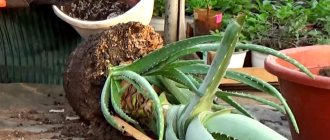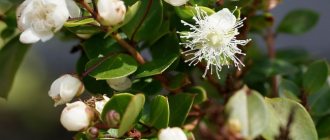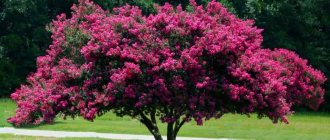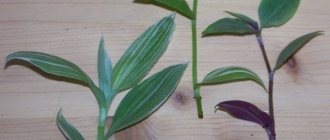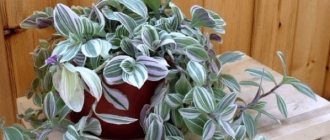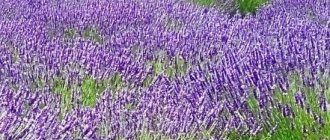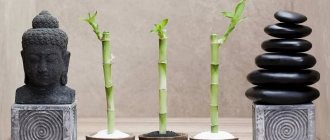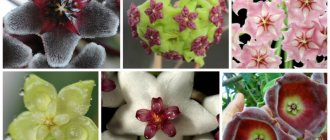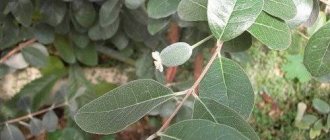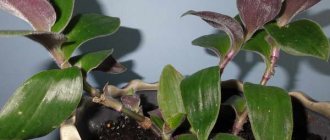Possible diseases and pests
The most common pests of this flower are aphids, scale insects and spider mites.
As a rule, these pests settle on both sides of the leaves. The leaves lose their color and gradually die. Aphids most often attack young stems and leaves. To avoid this problem, it is recommended to regularly inspect the plant for pests. If you see that the Tradescantia leaves are not very damaged, it is recommended to wash them with soap and water. If this method does not help, then you need to apply an insecticide.
Other problems:
- If there are few leaves on the plant, this indicates a lack of light, water or fertilizing.
- If all the leaves of variegated Tradescantia species are the same color, this indicates a lack of light.
- If the leaves of the plant become limp, yellow, with spots, then this indicates a lack of moisture.
- If the tips of the leaves begin to dry out and turn brown, this indicates that the air in the room is too dry.
How can it be dangerous?
Some signs suggest that the flower can increase the owner’s predisposition to idle chatter and idle entertainment. But you can also formulate this sign differently: the plant has a relaxing effect on the owner, and this is not always bad, the main thing is to do it wisely and at the right time.
On the other hand, some consider this plant unsuitable for the home because Tradescantia can create a mood for excessive anxiety, so you should listen to your own feelings when getting one.
There are rumors that the plant can separate couples. Many types of Tradescantia are climbing plants. This is probably why the flower was credited with the properties of a muzhegon, driving men out of the house. However, these features are characteristic of vines, and Tradescantia is a herbaceous plant with creeping shoots.
How care errors manifest themselves
When no pests are found, and the plant withers every day, the cause is improper care. Frequent mistakes in caring for Tradescantia and their consequences:
- Exposure of shoots, falling leaves - lack of light, mineral supplements and moisture. Move the pot to a well-lit place, additionally add appropriate fertilizer and water it without waiting for a crust to form on the surface.
- Loss of rich color in foliage due to excessive exposure to shade. Change the location of the flower pot.
- Withering and yellowing of leaves with the appearance of yellow spotting is not enough watering. Normalize the regime.
- Drying and darkening of the tips of the leaves is due to dry air in the room. Place a pan of water next to it or install a humidifier in the room.
When the primary sources causing the plant’s ill health are eliminated, everything returns to normal.
The value of Tradescantia among gardeners, especially beginners, is explained by its ease of care. Even with irregular watering, the plant continues to grow successfully. But if you want to get a large-scale branched flower with an exquisitely cascading cascade of stems, you will need to put in a little effort.
Lighting and location selection
Caring for a Tradescantia flower requires good lighting . She can feel great both in partial shade and in the sun. But the plant has some peculiarities.
The more light variegated Tradescantia species receive, the brighter their color becomes. On the contrary, species with solid green leaves may fade in bright light, so it is advisable to place them in partial shade.
The Tradescantia plant is not demanding on temperature conditions.
The plant loves both warmth and coolness. The optimal temperature for it is not lower than +10 °C. White-flowered Tradescantia is considered the hardiest. It can tolerate lower temperatures - up to +6 °C. All Tradescantias love fresh air, so it is recommended to place them in a well-ventilated area.
Reproduction methods
The best time to propagate Tradescantia is spring. You can do this at other times of the year; it is not recommended only in winter. Do not forget to always take into account one subtlety: these plants have very fragile, brittle stems, be extremely careful when working with them. Tradescantia can be propagated by cuttings, rooting layering, dividing bushes and seeds.
Cuttings
The simplest and most popular way. For cuttings, choose strong mature shoots and cut cuttings up to 15 cm long. The cuts are made under the nodes so that each of the cuttings ends up with buds. The cuttings are dipped in water to form roots.
After about 10 days, small roots (about 5 cm) grow. Rooted cuttings should be planted in pots, maybe several in each. To enhance the branching of the bush, shortening the stems is practiced. The correct composition of the soil mixture is the key to good development of cuttings. It should include compost soil, humus and river sand.
Some gardeners plant cuttings directly into pots with substrate, without rooting in water. At a temperature of approximately +20 degrees and diffused lighting, the roots will successfully grow in the substrate, and shoots with numerous branches and beautiful foliage will form from the buds on the cuttings. With full compliance with agricultural technology, in 1–1.5 months a completely decorative bush will grow.
Rooting cuttings
On the hanging branches of Tradescantia there are always barely noticeable rudiments of roots. If the shoot “reaches” the soil, it immediately clings to the ground, which is successfully used during propagation. A pot with a moist substrate is placed next to the main plant, one of the lower shoots is bent to it and secured to the ground with a pin. The roots almost immediately begin to grow into the soil, and a new bush is formed.
Dividing the bush
This procedure is carried out in the spring. The plant is dug out of the pot, the roots are cleared of soil and cut into pieces with a sharp garden knife. The cut areas are sprinkled with wood ash (or activated carbon) and placed in prepared containers with substrate.
Seeds
This is the most time-consuming method. If Tradescantia is propagated by seeds, then from the moment of sowing the seeds to an adult bush it will take 2-3 years. Before planting, the seeds are soaked in a solution of a growth stimulator for several hours, then they are sown at a shallow depth in a container with a moistened soil mixture. The crops are covered with transparent material and placed in a room with a temperature within 20 degrees above zero.
While waiting for the seedlings to appear, they carefully monitor the conditions (temperature, humidity) and systematically ventilate the improvised “greenhouse”. With the emergence of seedlings, the shelter is removed. When the seedlings have 3-4 leaves, they can be transplanted into separate bowls or flowerpots.
Incorrect feeding
With an excess of fertilizers, especially nitrogen, tradescantia “get fat”, grow rapidly, stretch out, lose color, and with insufficient feeding, they stretch out, turn pale, grow crookedly, become smaller and have poor branching. When feeding these plants, you should stick to the “golden mean”. And strictly follow the basic requirements for tradescantia:
Apply fertilizing only from March to September, if plants develop in autumn and winter - reducing them to 1 fertilizing every 1.5 months;
Use the standard frequency once every 2 weeks;
Choose a fertilizer with a reduced amount of nitrogen, increased potassium and phosphorus, and a good composition of microelements.
Diseases and pests
Why do Tradescantia leaves dry out, their number decrease, and the stems wither and turn yellow? These plant diseases are associated primarily with violation of maintenance rules. If you notice any signs of ill health, then it is necessary to eliminate the care problem:
- A decrease in the number of leaves or their coloring in one solid color indicates a lack of illumination;
- Lethargy, yellowness of stems and leaves are a signal of a lack of moisture in the soil;
- Tradescantia leaves dry out when there is insufficient air humidity;
Houseplants Tradescantia are affected by aphids, spider mites, and scale insects. These insects breed first on the underside of the leaves, gradually covering the entire leaf blade. The plant begins to wither and may gradually die.
Violation of living conditions contributes to the appearance of pests, as well as the development of diseases. For example, spider mites multiply in the presence of dry air.
At the first signs of pests, it is necessary to wash the Tradescantia with warm water and a solution of laundry soap. Then you should treat it with an insecticide. On our website we have prepared for you interesting and informative articles about Tradescantia. You can learn about the very spectacular and easy-to-care vine “Zebrina,” which is especially popular, in this material.
Buy this interesting plant for your collection of house flowers. With minimal care, Tradescantia will decorate the interior of your home and have a beneficial effect on its atmosphere.
What does a Tradescantia flower look like: photo and description of leaves and flowers
Almost all plants have strange names. For example, one of the common house plants used to be called “woman's gossip.” The scientific name of this plant is more euphonious - Tradescantia, named after the 17th century botanist John Tradescant. It was he who first gave a description of Tradescantia, visiting Muscovy in 1618 to study the flora of our north.
Tradescantia belongs to the Commelinaceae family of the monocot class. The family Commelinaceae gets its name from the plant Commelina.
Where did the popular name for tradescantia come from - “women's gossip”? Remember what a Tradescantia flower looks like: its stems hanging from the pot, densely covered with lance-shaped leaves sticking out to the sides, are so intertwined with each other that they are difficult to separate from each other, it is difficult to find the end or beginning of the branch. "Grandma's gossip" is common in the swamps of the American rainforests.
This plant is accustomed to moist soil and low light; its branches are located on the surface of the soil and are strengthened by roots extending from the branches, reproducing vegetatively.
As you can see in the photo, the stems of the indoor plant Tradescantia are very fragile and break off easily, but pieces of the stems quickly produce roots:
Tradescantia stems often dry out, starting from the root, but at the end of the dry stem a succulent twig with green leaves lives for a long time. This is the plant’s adaptability to vegetative propagation.
Look at the photo - under the Tradescantia leaf, which clasps the stem with its lower part, there is a swelling, or “nodule”, on which small rudiments of roots are visible:
Transparent hairs are visible near this place, which apparently retain drops of water, thereby promoting the formation of roots.
When it rains, water floods Tradescantia, but they do not die and live under water.
In cacti, aloe and agaves, we saw internal water tissue, but in this plant it is external, above the chlorophyll cells.
Why do Tradescantias with greenish leaves, exposed to bright sunlight, suddenly turn pale, the leaves become grayish, pale green? It is in them that water tissue is formed that protects from sunlight.
Tradescantias are not only green (viridis), but also with white stripes (zebrina, like a zebra), and with brownish, pinkish-purple and silver stripes (multicolor - multi-colored).
In Tradescantias with striped leaves, the following phenomenon is observed: they turn green in the shade, and in sunlight their color becomes brighter.
Pay attention to the photo - the flowers of Tradescantia are small, collected in an inflorescence-curl, all parts of the flowers, like all monocots, are divided into three:
The perianth has three green cup-shaped petals and three pink or bluish-purple petals, three large and three small stamens, which do not always develop. The three-lobed ovary forms a fruit-box.
The stamens have remarkable hairs, which are highly valued by botanists: the cells in them are very clearly visible under a microscope and the movement of protoplasm is clearly visible.
On this indoor plant, the first scientific study of the development of a flower was carried out by our Russian botanist, Academician N.I. Zheleznov, the first director of the Petrovskaya, now Timiryazevskaya Agricultural Academy.
In 1840, a 24-year-old young scientist, working with a magnifying glass and a microscope, studied the development of the calyx, corolla, stamens, hairs on them, pollen, ovary and ovules of a plant called “woman's gossip”, and refuted the incorrect statements of German scientists.
For this work - “On the development of a flower and egg in a plant” - N. I. Zheleznov received a master’s degree. He wrote the first Russian work on plant physiology.
In the absence of flowers in Tradescantia, you can see cells and protoplasm on the thin hairs that cover the base of the leaves. If a branch of Tradescantia is planted in moist soil at the bottom of a wide-necked bottle, thin aerial roots covered with hairs will grow from the tubercles under each leaf.
Botanists value Tradescantia leaves very much. From the underside of the leaves, under a microscope and even with a strong magnifying glass, “stomata” are visible, that is, closing and opening holes through which air and water vapor pass. It’s hot - the stomata are open - the evaporation of water cools the tender leaves.
Thus, Tradescantia is not only an interesting indoor plant from tropical swamps, but a plant on which schoolchildren and students study in laboratories, and scientists make scientific discoveries.
How to feed Tradescantia
It is necessary to feed the flower during the growth period, from early spring to autumn. It is recommended to alternately use organic and mineral fertilizers. You need to apply funds to the soil twice a month. The exception is varieties with variegated leaves. Organic substances are detrimental to their beauty. As a result of their action, the color of the leaf blades becomes simply green.
Watering and fertilizing
To provide Tradescantia with the necessary substances, it is enough to purchase a complex fertilizer for decorative deciduous representatives of the flora at a flower shop. Liquid products are added to the water used for irrigation. In this case, you need to reduce the dose of fertilizer by at least half so as not to harm the flower.
Note! The soil must always be moist before fertilizing, otherwise there is a risk of burning the roots.
Feeding during the flowering period
During flowering, which occurs at the end of summer, Tradescantia continues to be fed. During this period, the appearance of the plant changes. Small flowers appear, usually blue or white. Purple Tradescantia has soft pink buds. They look quite impressive against the background of dark leaves.
Purple
Tradescantia multiflora is distinguished by the appearance of many white flowers. They decorate the hanging stems, and the ampelous Tradescantia resembles an elegant bride.
Fertilizers help replenish the strength and energy spent on the formation of buds.
External features of the most common subspecies of Tradescantia
Houseplant lovers are invariably attracted to these plants for their variety of flowers, leaves and medicinal properties.
Tradescantia, its types and care features are a frequent topic of discussion among experienced gardeners, decorators and simply connoisseurs of home comfort.
White-flowered Tradescantia
most often found in ordinary apartments, but may vary slightly in appearance. It looks different depending on the subspecies, the color of the leaves is from green to almost white striped, the flowers are white or pale pink. There are the following varieties:
- Tradescantia aurea (yellow leaves with green stripes);
- Tradescantia laekenensis (green leaves with pink or white stripes);
- Tradescantia alba (light green leaves with white and light green stripes).
Tradescantia riverine
Found near bodies of water, it has fragile, tender shoots that lie close to the ground, and beautiful white flowers.
Purple
- one of the most prominent representatives of this species. During flowering, its bright purple leaves are made even more beautiful by the large number of light pink flowers.
Tradescantia pot
For a young plant, a container with a diameter of 15-20 cm is considered optimal. If you initially plant the cuttings in large pots, the crop will only grow the root system. You will have to wait a long time for good tillering and flowering.
Every spring (when replanting) the size of the pot increases by 1.5-2 cm in diameter
Choosing land for tradescantia
The flower develops well in nutritious, light soil with neutral acidity. To avoid mistakes, you can buy a ready-made composition. Optimal soil option:
- leaf soil - 2 parts;
- compost soil - 1 part;
- humus – 1 part;
- river sand – 1 part.
Need to know! Self-prepared composition must be disinfected. You can calcine the soil or spill it with a pink solution of manganese.
Selection of pot and soil for Tradescantia
The root system of the plant is thin and does not grow too densely. It doesn't need a big pot, let it be wider rather than deeper. The surface makes it possible to send out more shoots.
For your information! Choosing ceramics can play a cruel joke on the hypothermia of the flower if you keep it on the veranda or balcony in the summer.
The best pot for Tradescantia will still be plastic. Be sure to have drainage holes and a tray. Expanded clay is better suited for drainage.
In the ground, Tradescantia is not picky. It can grow in water, sand, moss and even in open ground during the season. The best mixture for it would be deciduous and humus with the addition of vermiculite or sand for looseness.
Reproduction methods
At home, the reo flower can be propagated in several ways, each with advantages and disadvantages.
Cuttings
The main advantage of such propagation is the opportunity to obtain new specimens with all the varietal characteristics of the mother flower.
Cutting is carried out in the spring, when Tradescantia has not yet begun to develop stems and foliage. The cuttings are dipped into a vessel with warm water and kept in this environment until roots appear. This may take 1 to 2 weeks. During this time, the water should be changed periodically.
As soon as roots 4-5 cm long appear on the shoots, they are transplanted into flowerpots using the technology described above.
By shoots
Another successful propagation method is to split the top of the shoot into two parts. Over time, new stems will appear in the split. They are carefully separated from the mother plant in the spring, then planted in a pot with purchased soil.
Young shoots need a stable temperature - within 18-20°C and regular moisture. These conditions will ensure rapid rooting.
By dividing the rhizome
It is usually carried out in two cases - to rejuvenate old flowers or when the roots are rotting.
The plant is first watered, then dug out along with a lump of earth, dipped in a basin of water to wash off the remaining soil. Remove, dry, divide the root system into several parts so that each of them has 2-3 roots and one shoot with two buds. The cut areas are powdered with charcoal, and after drying, the seedlings are planted individually in flowerpots.
Seeds
Usually the seeds are sown in early spring. To do this, use seedling boxes or containers with drainage holes. Expanded clay or pebbles are poured onto the bottom, then a light mixture of peat and sand (1:1) is poured to the top.
You can also sow seeds in peat tablets. They are scattered over the surface of the soil, then sprinkled with a thin layer of soil mixture, irrigated with a spray bottle, and covered with a transparent film or glass. Place in a warm and well-lit place. After about two weeks, sprouts will appear, then the shelter is removed. After 20 days, the seedlings are planted in separate containers.
Tradescantia planting rules
To propagate, you need to cut the cuttings from the top and remove a few of the lowest leaves from them. Leave them in water until roots appear, after which the shoots can be planted in a pot.
At the bottom of the pot you need to pour a drainage layer, then soil with the addition of peat and a small amount of river sand. Water the soil, plant shoots with roots in it, deepening them to the first leaf.
Once the plant is rooted, you need to do pinching (pinch off the stem above the leaf or where the stem forms an internode). The flower grows very quickly; in a few days the beginnings of lateral shoots should appear. Tradescantia needs to be replanted every spring.
To destroy pests (aphids, spider mites, mealybugs), you need disinfestation agents (Decis, Actellik, Karate). “Diseased” areas or non-viable areas must be removed as soon as possible.
Reproduction methods
Tradescantia propagates quite easily. There are several ways to do this.
Cuttings
Cuttings for planting can be taken from spring to late autumn. In winter, rooting occurs slowly. Apical stems with a length of at least 15 cm are suitable. Place the cuttings in water and keep them at a temperature not lower than +20 degrees. When the roots appear, the plant can be planted in the ground. Tradescantia will be more lush if there are several cuttings in one container.
Dividing the bush
It is better to carry out the procedure before the active growth of shoots begins - in early spring. Carefully remove the plant from the pot along with the soil. Divide the rhizomes without damaging them. You will get several full-fledged divisions, which can be immediately transplanted into new containers with a suitable substrate.
Seeds
This method is rarely used, but it is no less effective than cuttings and dividing the bush. Seeds are sown in early spring in a moistened substrate of peat and sand (1:1). They are scattered over the surface, lightly covered with substrate. Cover the container with film. Keep at a constant temperature - about +20°C and high humidity. The first shoots will appear on average after 2 weeks. Seedlings can be planted in separate pots after 2-3 true leaves appear.
Problems with the soil or container
If the basic requirements of Tradescantia for planting and replanting are met, difficulties are unlikely to arise. These hardy plants wither and become deformed in the following cases:
- when the size of its pot is extremely outgrown, when the plant is not replanted for a long time even after roots appear in the drainage holes;
- if there are no drainage holes in the pot or you forgot to put drainage at the bottom;
- when using very poor, heavy, clayey soil (almost any light universal soil for indoor plants is suitable for tradescantia, as long as it is loose enough);
- if the bushes are planted in very large pots with excess free soil;
- planting in containers that are too deep (the diameter should exceed the height, and not vice versa);
- if the bushes were deeply buried during transplantation.
Even if the tradescantia has suffered greatly, and only a few pitiful thin shoots remain from the bushes, there is no need to despair. After trimming the damaged parts, tradescantia can be easily restored with good care. And they grow amazingly fast. And with the help of stem cuttings rooted in water or sand, it is easy to grow new bushes to replace old ones.
Tradescantia propagation
Tradescantia can be grown from seeds, part of a divided root or cuttings.
Cuttings
The easiest way to propagate Tradescantia flowers is by cuttings.
- To do this, just take a young twig and divide it into 15 cm pieces.
- The finished cuttings are stuck into the ground at a distance from each other.
- It just takes a few days and they will take root.
Propagation by seeds
But if seeds are used for propagation, then the process must begin in the spring.
- The seeds are placed in the soil and greenhouse conditions are created with a constant temperature of about 20.
- The soil must be sprayed, the greenhouse must be opened, letting in fresh air, so that there is no excessive dampness.
- The sprouts that appear will bloom only in the third year.
It is better to divide the root when activity begins, in the spring, when new shoots appear.
How to plant a Tradescantia shoot correctly?
Growing Tradescantia from cuttings
- Cuttings 10 cm long are taken from adult specimens.
- Remove the leaves on the lower internodes.
- Several pieces are planted in a pot at once and watered abundantly.
- To speed up the process, you can cover the pot with cuttings with a jar. ...
- Cuttings can be rooted in water and then planted in the ground.
24 Jun
2022 Interesting materials:
How much heat does a candle provide? How many types of nucleotides are there in a DNA molecule? How much fabric do you need for dress pants? How many tons are in a 40ft container? How many tracks are there in the T 80 track? How many numbers do you need to pay for gas? How many digits are there in an Inn in Kyrgyzstan? How many flowers are not given? How many flowers does a bee need to fly around to collect a kilogram of honey? How long do cereals bloom?
Signs and superstitions
The Indians used tradescantia in their diet, to relieve stomach pain, and to treat cancer. The juice of this plant promotes wound healing, relieves boils, treats runny nose, sore throat, and diarrhea. An infusion from the aerial part reduces blood sugar levels. In the room in which Tradescantia grows, the air is purified and the level of electromagnetic radiation is reduced.
One of the reasons for the death of this plant may be the development of a cancerous tumor in one of the family members. Tradescantia takes away negative energy, development stops.
Magical properties depend on the variety:
- Bedspread reduces aggression and tension in relationships, activates creativity, protects against curses and witchcraft;
- Zebrina eliminates the negative consequences of envy and the evil eye, but “drives” men out of the house;
- Virginskaya balances the emotional background, relieves tension, enhances the sense of humor, and increases self-confidence;
- Anderson's Tradescantia eliminates conflicts and improves mood.
People who saw Tradescantia in a dream will experience changes in their lives.
According to Feng Shui, tradescantia should be placed in the southern corner of any room. If this is a bedroom, then to increase sexual energy you need to hang 9 plants above the bed.
Varieties with green foliage are not suitable for children's rooms. None of the varieties are suitable for people suffering from allergies, skin and liver diseases. Zebrina is best placed on window sills or at the entrance.
Tradescantia is not demanding to care for at home, although it is one of the plants that beneficially complements any interior. If you use several varieties, you can create original compositions not only in the garden, but also in flower pots hung in living spaces. Whether to believe in omens or not, everyone decides for themselves. However, it is advisable to take them into account before breeding any indoor plant.
Growing technology
Substrate composition
The plant can be cultivated in almost all types of soil. For a potted plant, a standard soil mixture for flowering indoor crops is suitable.
The soil can be easily prepared at home. To do this, you will need turf soil, leaf soil, clean river sand and humus.
The permeability of the soil can be increased using a drainage layer.
It is necessary to lay out a thin layer of drainage before planting. Expanded clay or pebbles should be used as filler. Sprinkle the top with medium-grain sand.
Top dressing
Tradescantia can be fed twice a month. It is advisable to use complex preparations from garden centers as fertilizers.
For watering, it is recommended to purchase liquid fertilizer. It is enough to add one tablespoon of the product to warm water.
How to choose a pot
Ampelous Tradescantia with hanging shoots must be carefully secured. Therefore, you will need to choose the right container for growing. In a shallow container, the plant may tip over. The substrate will fall out of the pot.
Tradescantia has a relatively small root system. Therefore, you can prepare a wide container of medium depth. The flower keeps well in a hanging pot.
For lush formation, you can plant several cuttings around the circumference in a wide pot. Subsequently, the overgrown Tradescantia forms a lush bush.
Description of Tradescantia
Tradescantia (lat. Tradescantia) belongs to the commelinaceae family and includes up to 30 species. The homeland of Tradescantia is the temperate and tropical zones of America. The name of the genus comes from the gardener John Tradescant, who worked for King Charles I of England and was the first to describe this genus of plants. Popular names: Saxifraga and Woman's gossip.
It is a low herbaceous perennial with straight or creeping shoots. The leaves are alternate and, depending on the species, have a lanceolate, elliptical or ovoid shape. Inflorescences grow from the axils of the apical leaves. Tradescantia is one of the most popular hanging plants grown indoors. Pinching helps make the plant more branched and dense. Tradescantia is most often grown in hanging vases or on high shelves to allow the shoots to hang down. Tradescantia blooms with blue-violet and simply blue flowers, even in rooms.
The plant is also used in aquariums - it is placed near the aquarium so that the shoots can sink into the water, thereby forming a green mat. Tradescantia also has medicinal properties - it neutralizes electromagnetic radiation and purifies the air in the room. If you cut off Tradescantia branches and put them in water, they can last from several months to a year, if you sometimes add fertilizer to the water.
Varieties
Among the enormous species diversity of Tradescantia, several variations should be highlighted:
- Tradescantia zebra-shaped. This modification is rightfully considered one of the most popular. Most people know it under a different name - hanging tradescantia. And it is very justified by its appearance: drooping shoots, small pointed leaves and neat, luxurious purple 3-petal flowers. A characteristic feature of this Tradescantia is the color of the leaves: on the inside they are bloody, and on the outside they are light emerald with a bright silver-grass stripe (hence the name).
- Tradescantia virginiana. The modification became widespread after cultivation by breeders who were shocked by its luxurious, colorful flowering. The plant became the “parent” for many hybrid species and types of Tradescantia. Externally, this species is easy to recognize by its straight, long and strongly pointed leaves, as well as lush umbrella inflorescences of a soft azure hue.
- Tradescantia Anderson. A hybrid produced by combining other types of Tradescantia with Virginia. This variety is considered one of the best for growing in garden plots. The leaves of Anderson's Tradescantia can be not only classic green, but also purple and even lemon in color. The flowers are characterized by many shades of blue, pink, and purple.
- White-flowered Tradescantia. The plant has original pointed leaves, creeping shoots and tiny white flowers.
Types of Tradescantia
There are more than 100 different species, and almost all of them are grown indoors. Since it is a heat-loving plant, it is not able to survive winter in Russian conditions.
Room
Does not exist separately
, since anyone can grow outside in the summer, but in cold weather it needs indoor conditions.
White-flowered
One of the popular types that can often be seen in our apartments. Herbaceous hanging, oval-shaped leaf blades painted in various shades:
- White stripes
- Lettuce stripes
- Pink stripes
All these stripes run along the sheet. It also has its own varieties, which differ from each other in shades of stripes
:
- White-striped form - white stripes;
- Laekenensis – has pink stripes;
- Tricolor - pink and white stripes on a light green background;
- Alba - light green background with green and white stripes;
- Aurea - yellow leaf blades with green stripes.
The flowers are located at the ends of the shoots and are white.
It has long shoots of dark purple color, leaf blades grow up to 5 cm long and are lightly covered with hairs. The flowers are not large, pink in color.
Small-leaved is the smallest variety
Tradescantia. Leaf blades are no more than 6 mm, green in color, with small spots on the top of the leaf. The flowers are white.
It has large leaf blades with green and pink stripes located along the leaf blade in no particular order. Moreover, the reverse side of the sheet looks uniformly dark green. The leaves are oval, growing up to 8 cm in length. It blooms with small delicate pinkish flowers.
This type of Tradescantia is slightly poisonous
and therefore, after working with it, you should wash your hands well. It has long branches with grayish leaf blades. Small pink flowers are located at the ends of the shoots.
If there are children in the house, then it is better not to grow this species at home.
Striped
This species of Tradescantia also has its middle name Zebrina. A very common species of Tradescantia.
This is a plant that can often be seen in institutions
. The leaf blades are oval-shaped, dark green in color, with silver and purple stripes along the leaf. The length of the striped leaf is 5 cm. It blooms with small flowers of pink-red or white.
This species is easy to distinguish by its leaf plates, which are simply wrapped in white cotton wool.
. Green leaf blades grow up to 7 cm in length. The plant actively branches and grows quickly. In this case, watering of this species should be limited, since moisture slowly evaporates from the surface of the leaf. Flowering occurs with bright pink flowers.
In order for the hair to be saturated, the plant should be cultivated on a southern windowsill.
This Tradescantia can be found growing along rivers and lakes. The leaves are green, up to 3 cm long. The stem is burgundy. White flowers are located at the ends of long shoots.
With good care and sufficient humidity, the species forms a dense carpet of green color.
This is a garden tradescantia with an erect stem and elongated leaf blades up to 15 cm long. The flowers are large blue and purple. They bloom in the early morning, before the heat sets in, and at these hours the plant looks very impressive among other flowers in the flowerbed.
This species is considered unique, since all twigs and leaf blades are densely covered with hairs
. The branches are erect and the foliage is green. The blooming flowers are bright pink.
The species differs from other Tradescantia species as it grows among rocks and has short, fleshy stems
capable of accumulating moisture. Therefore, some botanists previously classified the species as a succulent. The leaf plates resemble small boats, no more than 2 cm long. They are green, but from the underside of the leaf you can see a pink tint.
When cultivating this species, it should be watered very rarely so as not to cause rotting of the root system.
The species has a second name Reo
. It has olive-colored leaf blades that are dark purple underneath. The leaf blades are large, up to 40 cm long and 5 cm wide. They can be planted outside only in the summer. The flowers are white.
Anderson
Can be grown in the garden, as it winters safely in central Russia
. Named after the scientist who bred this species.
Many varieties of this species can be seen in flower beds; they differ in different shades of colors:
- Blue Stone – has blue flowers
- Hutchinsonii – has blue flowers
- Сoccinea – blooms with red flowers
- Carnea – blooms with beautiful pink flowers
Features of caring for Tradescantia
Tradescantia, as an ampelous plant, is usually located in hanging pots. She sends her stems along the walls, decorating the room. Excess water after watering remains in the saucer or tray. After the procedure, approximately 30 minutes later, you need to drain the excess liquid.
Tradescantia hanging
Stagnation of water when growing hanging plants is dangerous. Therefore, it is necessary to use a thick drainage layer and be sure to water the flower after the soil dries.
For ease of humidification, it is better to purchase a watering can with a curved spout.
Even if it seems comfortable in the apartment, and the air is humid, it is worth remembering that the higher you go, the drier it is. Therefore, the plant, when it is located on the wall, may require additional spraying.
Features of Tradescantia flowering
Tradescantia blooms profusely, but the petals themselves will never be carelessly scattered throughout the garden. During the day, in the afternoon, in sunny weather, or in cloudy weather, but towards evening, Tradescantia flowers begin to curl up and disappear in their seed boxes, like snails in their shells. In this way, you can observe the mystery of the birth of a seed.
In their shape, bells with seeds and buds that have not yet opened resemble huge clusters. They are a complex plexus, so it is quite difficult to determine which “cluster” will turn into a beautiful flower with three petals the next morning. The main advantage, as mentioned earlier, is the long and continuous flowering of garden Tradescantia.
Important! The decorative appearance is affected by the load towards the end of the season, if you try to remove already faded bunches each time.
Diseases and pests of Tradescantia
In indoor conditions, pests rarely attack Tradescantia, but in the garden it can be parasitized by aphids and slugs. Contact and systemic insecticides will help get rid of them. Almost all Tradescantia diseases occur due to improper care. For example, slow growth or the appearance of yellow spots is due to insufficient moisture, light or nutrients. Untimely pruning leads to baldness and stretching of the stems, and due to improper lighting, some varieties lose their variegated color. If the bush turns yellow, then this is a sure sign that the air in the room is too dry and it’s time to spray. You should also be careful when watering, since stagnation of water leads to the formation of fungi and mold, which will require the use of fungicides to combat. In turn, insufficient watering leads to the leaves drying out and falling off.
Sometimes, if not properly cared for, yellowish spots may appear on Tradescantia.
Types of indoor plant Tradescantia and photos
The Tradescantia genus includes about thirty different species.
Home tradescantia
Tradescantia, which is grown as indoors, comes in the following types:
White-flowered Tradescantia
White-flowered Tradescantia also has such names as Tradescantia tricolor and Tradescantia uridis
In another way it is also called “Tradescantia tricolor” or “Tradescantia uridis”.
The plant is native to South America.
The stems are creeping. The leaves are wide and oblong, ovoid, pointed at the top, smooth on both sides.
The length of the leaves is about 6 cm, the width of the leaves is about 3 cm.
The color of the leaves is green or silver, with a glossy sheen.
The flowers are small and white, the bracts are white.
There are several varieties of this type of Tradescantia:
- Albovittata - stripes on the leaves are only white.
- Tricolor - stripes on the leaves are lilac-pink and white.
- Aurea – green stripes, yellow leaves.
- Aureovittata - longitudinal golden stripes on the leaves.
Blossfeld
The plant is native to Argentina.
Stems are creeping and erect. The leaves are oblong, elliptical, pointed at the top, and covered with white hairs at the bottom.
The length of the leaves is about 8 cm, the width of the leaves is about 3 cm.
The color of the leaves is greenish-red above, purple below.
The flowers are small and pink.
The most common variety of Blosfeld's Tradescantia is variegata or variegated. Its peculiarity is the presence of a small number of yellow and green stripes on large leaves, while the pattern on neighboring leaves coincides.
Striped Tradescantia
Striped Tradescantia also has the names hanging tradescantia and hanging zebrina
Another name is “hanging tradescantia” or “hanging zebra”.
The stems are smooth, drooping or creeping, and often acquire a reddish color. The leaves are elongated, ovoid.
The length of the leaves is about 8 cm, the width of the leaves is about 5 cm.
The color of the leaves is green with silver stripes on top, red below.
The flowers are small and purple.
Riverside tradescantia
Another name is “Tradescantia myrtifolia”.
The plant is native to Brazil.
The stems are creeping, colored red, covered with green spots. The leaves are ovoid, smooth.
The length of the leaves is about 2.5 cm, the width of the leaves is about 2.5 cm.
Leaf color is green above, red below.
The following varieties are known:
- Variegata – beige stripes.
- Quicksilver - white stripes.
Garden Tradescantia
In the photo there is a garden Tradescantia
Tradescantia, of course, is better known as a houseplant, but a species of this plant has been bred that can overwinter outdoors in cold conditions. This is Anderson's Tradescantia, this name combines varieties bred on the basis of Virginia Tradescantia.
Shoots are straight, branched.
The leaves are lanceolate, purple and green.
The flowers are collected in an umbrella-shaped inflorescence and can be white, pink, blue or purple.
The best varieties:
- Leonora - blue or purple flowers.
- Osprey - white flowers with a blue center.
- Iris - bright blue flowers.
- Innocence - white flowers.
- Sweet Kate – dark blue flowers.
- Red Grape – crimson flowers.
You can learn how to care for the selaginella plant at home here.
See interesting and beautiful photos of the indoor plant Fatsia.
What other varieties of Tradescantia are known?
In addition to the varieties of indoor Tradescantia described above, the following are also found:
- Rainbow Hill - leaves are lilac on top, green with white stripes below, flowers are lilac or white;
- Gold Wing - yellow-green leaves;
- Maiden's Blush - new leaves are white or pink, old leaves are pink-white with green tips;
- Yellow Hill - green leaves with beige, white or yellow stripes on top, green underneath.
Beneficial features
Since ancient times, Tradescantia has attracted flower growers not only for its subtle original beauty, but also for its medicinal properties:
- gardeners know it as a hemostatic and healing agent for skin damage;
- if you apply a fresh leaf to the sore spot and make a bandage, the wound will stop bleeding, swelling and bruising will decrease, and minor cuts and scratches will heal quickly;
- It is useful to periodically chew a Tradescantia leaf to prevent gum problems;
- alcohol infusions are used for lotions in the treatment of injuries and for rubbing sore spots;
- Tradescantia decoctions relieve the symptoms of colds, sore throat and acute respiratory viral infections (gargling).
But we should not forget that self-medication is extremely dangerous - preliminary consultation with a specialist is always necessary.
Returning home after a long day of work, you will be happy to relax in an atmosphere of coziness and comfort at the sight of well-groomed plants. If you are seriously interested in growing tradescantia, it will certainly become an indispensable addition to the collection of plants in the interior of your home or garden.
An excellent way to propagate Tradescantia in the video below.
Help the flower
Sometimes a flower needs help so that it does not lose its beautiful foliage.
Why do the leaves turn yellow?
It is necessary to adjust the watering of the plant by increasing the watering dose. Also, you need to care more carefully, and the leaves will stop turning yellow.
The roots are rotting
Why does it start to rot? This indicates overwatering
. In this case, Tradescantia is cut into cuttings and grown again using cuttings.
This colorful and beautiful plant is very easy to cultivate at home or in the garden. Using a variety of varieties, you can create magnificent miniature flower beds in hanging pots.
Tradescantia: care at home
Despite the unpretentiousness of the culture, in order to grow a beautiful lush flower, it is necessary to provide competent care for Tradescantia. White flowers do not last long, only one day, but due to the large number of buds in the inflorescence, which bloom one after another, the impression of long flowering is created. You won’t be able to see the flowers without proper care.
Tradescantia Fluminensis (riverine)
Temperature and lighting
Tradescantia white-flowered does not require special care, although it can grow in conditions with low temperatures from 6°C. Usually the flower grows both in warm and cool conditions, but the room should not be colder than 10-12°C.
For your information! Tradescantia Fluminensis (riverside) is one of the few plants that likes fresh air and some direct sunlight, but can grow well in partial shade.
Watering and air humidity
Tradescantia requires compliance with watering rules, which vary depending on the time of year, air humidity and room temperature. In summer, especially on hot days, the flower is watered once every 2 days; at room temperature in winter, once a week is enough. The signal for watering is the drying surface of the soil in the pot. The soil must be kept moist, but without stagnant water.
Tradescantia is a tropical plant, but it does not require constant spraying of the leaves, but it grows better in a room with high humidity. In the cold season, when the heating season begins, and, consequently, the air in the room becomes very dry, it is necessary to spray the leaves of the flower a couple of times a day. Tradescantia care in the form of watering is recommended with settled water.
Lighting and location selection
Tradescantia can grow both in a bright place and in a shaded one, although in the first case this will contribute to rapid growth. The choice of the place where the flower will grow should be approached responsibly, especially if you grow variegated Tradescantia. Care and sufficient light will make the color of the leaves more vibrant.
Important! Plants with monochromatic leaves that are green in color, on the contrary, in the sun, losing contrast, become faded, and in the shade they acquire a rich shade
Flower propagation
When growing Tradescantia violet, care and propagation at home is carried out from early spring to late autumn by cuttings or dividing the bush. In winter, due to the very slow germination of roots, propagation of the flower is not recommended. You need to cut off the top of the stem so that the cutting has several good internodes and does not exceed 15 cm in length, then place it in a container with water. After a couple of days, when the roots appear, the plant is transplanted into a pot of suitable volume with specially prepared soil and watered abundantly.
When planting several cuttings in one pot at once, the plant will look more lush
Propagation of Tradescantia small-leaved, care is carried out as follows: take it out of the pot along with a piece of soil and carefully divide the rhizome into several parts, trying not to damage it. Then the plant needs to be planted in a pot with soil prepared in the same way as for cuttings.
Note! Along with cuttings and division, Tradescantia can be propagated by seeds, but this method is only suitable for miniature Tradescantia, garden species
Growing Tradescantia in a bottle
The unpretentiousness of Tradescantia allows it to feel great in water. It is very easy to propagate it there - it is often used as algae for the bottom of aquariums. The shoots spread and grow remarkably in the miniature sea. It’s very easy to make unusual compositions using decorative bottles of different shapes and colors by growing Tradescantia in water.
The flower has adapted to conditions even without fresh oxygen and watering
David Latimer and his Tradescantia are an unusual story. An amateur gardener has created an entire ecosystem in a closed container. His experiments began with various attempts to plant different plants in a 40-liter bottle of soil. Tradescantia took root, and in the first years it received watering and oxygen from outside.
In the early 70s. David capped the bottle and has never opened it since. The plant has created all the conditions for a comfortable life. Sunlight allows active photosynthesis, during which the leaves produce oxygen. It is because of the latter that water flows down the walls of the vessel. In the center of the bottle, shoots that do not receive enough light rot, producing carbon dioxide and providing fertilizer for the mini-forest. It is a home for the plant, maintained by itself.
Medicinal properties
The beauty of the plant and how it is used in various design solutions can be judged from the photo of Tradescantia. But there are also reasons why Buddhist monks grew this flower.
- A long time ago, they knew about the content of elements in Tradescantia that can help in the treatment of certain diseases. External and internal use is practiced. The leaves can heal wounds.
- In Cuba they made medicines from tradescantia for indigestion, in Jamaica for tuberculosis, and in Venezuela they used it for diabetes.
- Animals know about the properties of the flower, which is why cats love to gnaw its leaves.
- In modern medicine, the medicinal properties of tradescantia are also used to get rid of purulent wounds, boils, periodontal disease and hematomas.
Reproduction
You can propagate Anderson's Tradescantia by seeds, cuttings, or by dividing the bush.
Sow the seeds directly into the ground in the spring, but if you wish, you can grow sprouts in a greenhouse. Cultivation is carried out according to general rules.
Some varieties bloom already in the first year of life. But as for hybrid varieties, for example, Strawberry Ice, the flowers from the seeds may not turn out exactly the same as in the photo from the packaging.
You can also divide the bush only in the spring, and before new branches appear. If the shoots are too long, shorten them to a length of 15 centimeters. If necessary, trim the roots too.
The simplest method of propagation is cuttings.
Please note that the cutting must have at least two, or preferably three, growth points
You can germinate cuttings throughout the warm period of the year. The root panicle on them forms equally quickly both in soil and in water. At the same time, it is better to germinate cuttings in small greenhouses.
An important question is how the plant overwinters.
It is important for flower growers to preserve this perennial and protect it from frost. If the cuttings are planted in the ground at the beginning of summer, the plant will overwinter normally, although to be on the safe side you can cover it for the winter
If you planted the cuttings at the end of summer or early autumn, then you should dig up the plants for the winter, transplant them into pots and leave them in the house for the winter. In the spring, plant them again in open ground.
It will be useful to know that Anderson's Tradescantia easily tolerates frosts of up to 34 degrees in a snowy winter. If there is little snow, the plant may die in frost of 15 degrees. In order not to worry all winter, just in case, insulate these bushes in the fall.
Signs and superstitions
Tradescantia is one of the few plants that have the property of protecting its owner. This flower is associated with the following beliefs:
– the presence of tradescantia in the house protects the owner from evil intentions and limits him from the influence of visitors who have bad thoughts;
– a flower clears space from various negative entities if it feels the owner’s care for itself;
– the sudden drying of Tradescantia signals the removal of damage or the evil eye from the owner;
– some consider tradescantia an unsuitable flower for the home, as it can lead to excessive anxiety;
– the plant promotes positive changes and the achievement of any results.
Description
This is a hanging crop that forms “waterfalls” of shoots of different colors depending on the type and variety. The length of the branches can reach 80 centimeters.
Some of its species are ground cover. In our middle zone it is used for landscaping the most diverse, most secluded corners of the winter garden and an ordinary apartment; it feels great in the shade and in the sun, in cold and heat.
Named after the father and son Tradescant, Englishmen, travelers and botanists, founders of one of the first botanical gardens (17th century, beginning) of London.
It is believed that Tradescantia weakens electromagnetic radiation from electrical appliances, increases the humidity of the room, and is a talisman for its owners. This is a filter plant that purifies the air from harmful fumes.
“Woman's gossip” is another name for Tradescantia, which was given to it for its long shoots intertwined with each other. But perhaps also for the fact that he protects his master from evil slander and gossip.
They are distinguished by a wide variety of leaf colors: green, purple, variegated, yellow, with various stripes. The shape of the leaflets is ovoid, lanceolate, ellipsoid.
General information:
Tradescantia (lat. Tradescantia) is a genus of perennial evergreen herbaceous plants belonging to the Commelinaceae family. Many types of Tradescantia are popular indoor plants. There are about 90 species in the genus Tradescantia. The natural range of Tradescantia is located in the temperate and tropical zones of America, stretching from southern Canada to northern Argentina.
Tradescantia shoots can be straight or creeping, lodging or rooting on the soil surface. The leaves of Tradescantia are elliptical in shape, from ovate to lanceolate, alternate. The inflorescences of the plant are axillary, located in the axils of the upper leaves or generally apical. Since most Tradescantia species are very unpretentious decorative foliage plants, they are grown as indoor plants, as well as in winter gardens and greenhouses.
Tradescantia is used in the design of interiors, winter gardens, windows, and also as ground-blood. The genus Tradescantia was named by Carl Linnaeus in honor of the Tradescant son and father, travelers, collectors and naturalists originally from England.
How indoor Tradescantia grows and reproduces
Among the huge number of plants that can be kept at home, indoor Tradescantia is gaining popularity. This plant is an evergreen, the leaves and flowers have a variety of colors - from white to almost purple. Thanks to its external originality and lack of difficulties in care, this representative of the kingdom of flora will certainly be appreciated by true lovers of indoor plants.
We need to take a closer look at the main characteristics of this beautiful plant. So, it belongs to the Commelinaceae family, in its natural environment it is distributed in the tropics and temperate zone of America, its habitat extends from Argentina to southern Canada. As for habitats that are uncharacteristic for this biological species, these decorative foliage plants are easily grown at home, in greenhouses and winter gardens; they fit perfectly into indoor interiors and are appropriate as soil covers.
Problems, diseases, pests
Tradescantia suffers most from spider mites and scale insects.
- spider mites settle in internodes and leaves fall;
- scale plaques are clearly visible on the back of the leaf.
The treatment is the same: first, wash with abundant soapy foam and rinse thoroughly in the shower. If this method does not help, then apply chemical treatment according to the appropriate instructions.
But more than pests, damage to the flower is caused by defects in care:
- the tips of the leaves turn yellow - the room is too dry and hot - you need to spray it several times a day, make sure that the soil does not dry out;
- the leaves begin to turn yellow - excess light - remove from the southern windowsill;
- grows slowly - lacks nutrients - add fertilizer;
- rotting of the stems - stagnation of water in the container - it is better to cut off the apical shoots and grow a new plant.
Tradescantia—flower description
Stem
Long, mostly green, does not become rusty, quite flexible. Therefore, Tradescantia is an ideal plant for hanging flower pots.
The stem of Tradescantia can reach several meters.
Leaves
They come in a variety of colors: green, lilac, pink, with a purple tint, with stripes, almost white. Texture: smooth, completely pubescent, pubescent only below, rough. Shape: oval, oblong, long narrow.
Tradescantia has species that can grow outside: the homeland of Tradescantia is America, there are also places with a fairly cool climate.

